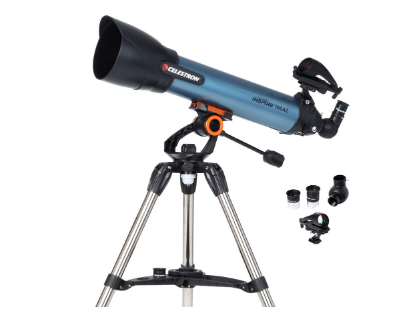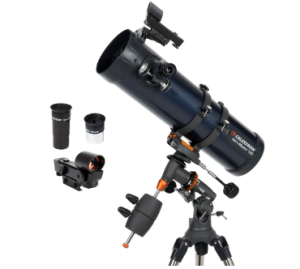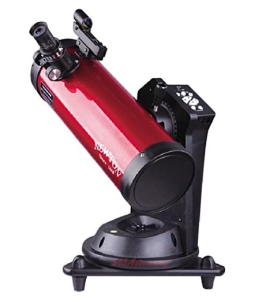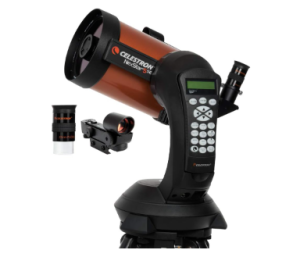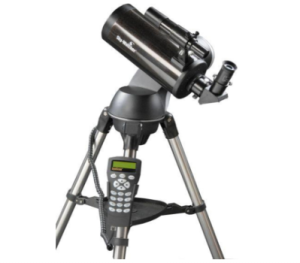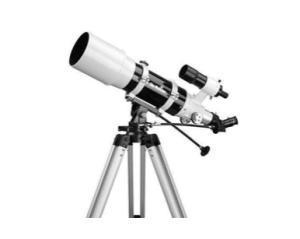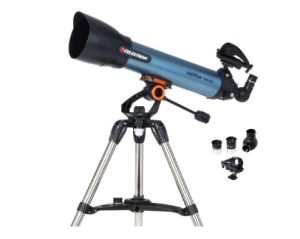Are you searching for the best scope for astrophotography or the best telescope for astrophotography and stargazing?
In today’s post, we will review some of the top-recommended options available on the market today. We know choosing the best one can be very difficult, especially if you are a beginner.
We created this buying guide to help you get a good telescope. It will help you explore galaxies and view the night sky closer from the comfort of your place.
If you want to capture some astrophotography, you need to figure out the tools you need to use.
It is worth mentioning that many options are available on the market today.
Users are often spoilt for choice, especially if they are beginners. This is because they have to figure out which product works best and fits their needs.
Whether you are a beginner or an experienced astrophotographer looking for an upgrade, this buying guide will help you narrow down your search. However, before we look at the telescopes, let us look at the difference between a refracting and reflecting telescope.
Refracting and Reflecting Telescopes: What is the Difference?
It is important to note that there are two types of astronomical telescopes. If you are a beginner, you will notice that some of the telescopes we have included in this buying guide look a little bit different.
Most people use ‘refracting‘ telescopes, which are not the same as telephoto lenses. Telephoto lenses use a series of optical glass elements to focus an image captured at the front into an eyepiece at the back.
On the other hand, ‘reflecting‘ telescopes do not use a large, glass objective lens at the front.
However, they are essentially hollow tubes equipped with a parabolic reflecting mirror at the back. This large parabolic reflecting mirror does the same job as the glass objective lens. It reflects the image to the front of the tube. The secondary mirror reflects it into an eyepiece in the side of the telescope (‘Newtonian‘ reflector).
In addition, the secondary mirror can reflect straight back down the tube and through a hole in the main mirror to an eyepiece at the back (‘Schmidt Cassegrain‘ reflector).
There are also hybrid reflectors called Maksutov reflectors, which use a glass lens at the front to help focus the light for a mirror. This is almost the same as the ‘catadioptric‘ mirror lenses for cameras.
Before we start the reviews, it is important to note that refracting telescopes tend to be longer and heavier.
Additionally, large objective lenses that match reflecting telescopes are very expensive. However, reflecting telescopes give you more light gathering power and this delivers value for each buck you spend.
Best Telescopes For Astrophotography And Stargazing
The telescopes included on this list are designed primarily for naked-eye viewing. Without wasting much time, let us look at the features of the best telescopes for astrophotography.
1) Celestron Astromaster 130EQ
The Celestron Astromaster 130EQ is the best choice for the slightly more experienced amateur astronomer. This is because it features a Newtonian reflector optical design, which is good for long-exposure astrophotography. This design will require collimating to perform to its potential. However, this process can be a little complicated for beginners. With great practice, this can be achieved easily. It is important to note that this telescope comes with a motor-driven equatorial mount. This is perfect for serious stargazing, even for extended periods. In addition, the larger aperture shows even the minute details in any glassing application. Features
|
2) Sky-Watcher Heritage-114P Virtuoso
If you are looking for a reflecting telescope that is specifically designed for Canon DSLR users, then the Sky-Watcher Heritage-114P Virtuoso is the best choice for you. It features a Newtonian reflector design, with an aperture of 114m and a focal length of 500mm. This telescope features a small design but offers very many outstanding features, which are perfect for astrophotography. It is also a budget friendly option and can be upgraded depending on your glassing application. It is worth mentioning that the mount provides a stable observing platform. This allows you to track night-sky objects easily once located. One of the most outstanding features is that it can be slewed automatically in both axes, at five different speeds using the mount’s electronic keypad. This telescope is highly recommended because of the Freedom-Find dual-encoder technology. This technology enables the telescope to be moved manually in any axis without losing positional information and alignment. This great feature comes in handy during glassing applications. Features
|
3) Celestron Nexstar 5SE
If you are on the market for a telescope with high quality features, the Celestron Nexstar 5SE is a great option for you. This premium reflector scope features a Schmidt Cassegrain optical design with a high magnification of x300 and a focal length of 1250mm. This telescope is suitable for beginners because it has a superb user-friendly design. In addition, it has enough aperture to show plenty of detail, making it a great choice for most types of astrophotography. However, we recommend it for lunar and planetary astrophotography because of the longer focal length. It is worth mentioning that you can upgrade this telescope using a wide range of accessories. For example, you can add a device to align with the night sky automatically. However, it is not ideal for longer exposure astrophotography. Features
|
4) Skywatcher Skymax 127 SynScan AZ GoTo
The Skywatcher Skymax 127 SynScan AZ GoTo features a Maksutov Reflector optical design with an aperture of 127mm and a focal length of 1500mm. We recommend this telescope for planetary photography because it has a high useful magnification of x300 and a large focal length. The most outstanding feature of this telescope is the goto tracking mount. However, this mount is sold separately. The other outstanding feature is the Barlow lens that helps to increase the focal length. This allows you to have high-power photography and observation. The aperture of this device is large enough to observe distant objects such as Jupiter’s Great Red Spot and Saturn’s ring system. In addition, it is not very expensive, and it will deliver value for each buck you spend on it. Features
|
5) Skywatcher Startravel-120 AZ-3
If you are searching for a refractor telescope that offers many advanced features for the price, the Skywatcher Startravel-120 AZ-3 is the best choice for you. This telescope has an aperture of 120mm and a focal length of 600mm. The most outstanding feature of this telescope is the tracking mount. It features IOS/Android WiFi control, which is very convenient. The mount also features a DSLR shutter release port allowing you to control your camera. This telescope is designed for both experienced and new users. It is very easy to set up and use, as you can access a wide range of targets easily. We recommend it for lunar and planetary photography. Features
|
6) Celestron Inspire 100AZ Refractor
The Celestron Inspire 100AZ Refractor is a perfect choice for beginners like small children. It is not expensive and features a refracting optical design. This makes it a great choice if you have a limited budget. In addition, it features an aperture of 100mm and a focal length of 660mm. This telescope comes with a basic un-driven alt-azimuth design. However, this mount enables you to get some impressive images of the lunar surface. The most outstanding feature of this telescope is that it comes with an integrated smartphone adapter. This means that you can mount your phone to the eyepiece to take impressive images. It is also important to note that you can easily mount a digital SLR to the scope. However, the adapter is sold separately. Features
|
See Also
- Best Bushnell Scope for Air Rifle
- Best Vortex Scope For 308
- Best Handheld Thermal Imager For Hunting
Features to Consider Before Buying the Best Scope for Astrophotography And Stargazing
Here are some of the features you need to consider:
- Motorized mount – It is important to use a telescope with a motorized mount. This will track the motion of the sky over time. This is because celestial objects appear to slowly progress across the sky from east to west, due to the earth’s rotation. If the telescope does not have this mount, objects will appear to drift out of the field of view of the telescope. This means that you will have to re-center the target object manually because of the limited exposure.
- Focal Length – If the focal length is long, you will have a narrow-angle of view and a higher magnification level. Therefore, it is important to choose the focal length depending on the size of the objects you will view.
- Aperture – It is important to check the size of the objective lens if it is a refracting type. The size should be larger than 75mm to collect more light. It is also called the focal ratio.
- Equatorial Mount – This type of mount is similar to the tilt and pan tripod. However, the pan axis is tilted to match the tilt of the earth. This allows you to follow stars and planets across the sky by moving your telescope.
- Refracting Telescope – As mentioned earlier, this is the most commonly used telescope that uses optical lenses to focus on celestial objects. They are designed for stargazing and are easy to set up and use.
- Authenticity – It is important to purchase a telescope from a brand that is officially licensed.
- Durability – You should ensure that the telescope you purchase is made from high-quality materials. This will ensure its longevity.
See Also
Conclusion
In summary, we have highlighted the top-recommended options when it comes to choosing the best telescope for astrophotography. The options included in this buying guide can be used by both beginners and experienced users. However, you need to practice how to use them effectively to get the best glassing experience.
In addition, we have highlighted the major difference between refracting and reflecting telescopes. We have also shared some of the features you should consider before buying a telescope.
We hope that this buying guide helped you to find the best telescope for the money.
See Also

